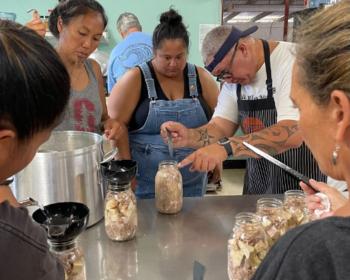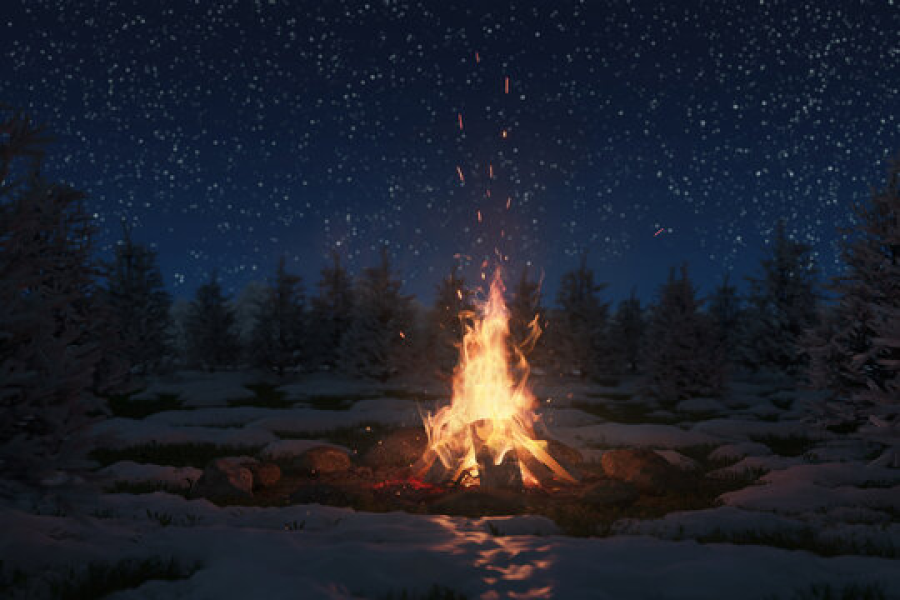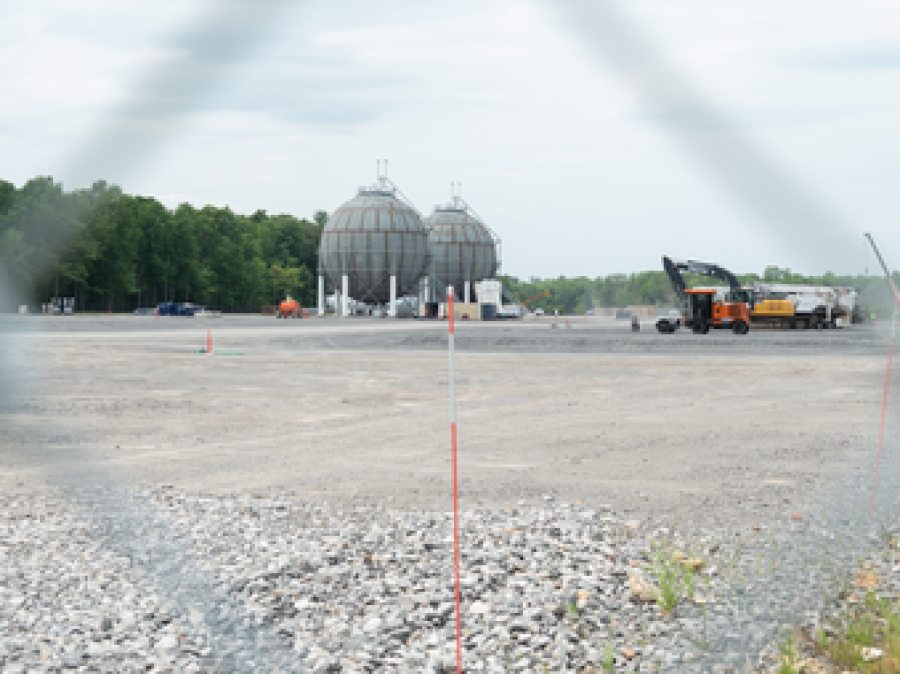By way of background, it is important to understand the circumstances and the history of the Mt. Graham Observatory. In the early 1980s, The University of Arizona, in an effort to develop the next generation of observatories to take advantage of new technologies, surveyed over 280 sites in the continental United States. The results clearly favored the desert Southwest as the region offering the best climatic conditions for astronomy. Mt. Graham was selected as the best available site, and this led in 1984 to the establishment of a 3500-acre astronomical study area in the Pinaleño Mountains, also known as the Graham Mountains, as part of the 1984 Arizona Wilderness Act. The act was fully endorsed by all of the major environmental organizations. Shortly thereafter, cultural and environmental studies were initiated and continued until July of 1988 when a final Biological Opinion was issued by the Fish and Wildlife Service. A draft Environmental Impact Statement (EIS) was completed in October 1986, and the final EIS was issued in November 1988.
Among the top three ranked, potential observatory sites identified by The University of Arizona study, Mr. Graham was selected (confirmed also by the National New Technology Telescope Project at NOAO as the premier continental site). Only Mr. Graham was fully developed with 53 miles of road, more than 90 homeowner cabins, two man-made lakes, a Bible camp, a variety of transmitting facilities (on Heliograph Peak), and over 250,000 visitor days per year. It was and still is believed that in this context a small and environmentally sensitive observatory would have little or no impact. All cultural and environmental studies were completed, and the Biological Opinion (Reasonable and Prudent Alternative 3) permitted the construction of up to seven telescopes on Emerald Peak (the third highest peak) 1.7 miles from High Peak (the highest peak) if certain terms and conditions were met to mitigate any conceivable impact on the Mr. Graham red squirrel. It is notable that many of these mitigating measures were "poison pills", according to the testimony of the responsible Fish and Wildlife service biologist. To quote Lesley Fitzpatrick, Fish and Wildlife Biologist, from a deposition to the General Accounting Office (GAO) (interviews 26 April 1990 and 14 May 1990): "There was some effort made by the Regional Office to suggest features that would make the development unpalatable to the Forest Service and the University. The Fish and Wildlife Service did not want to take a stand against development and hoped to make their suggestion a poison pill that would cause the Forest Service to reject development or the University to abandon the project."
In September of 1988, The University of Arizona petitioned Congress to have Reasonable and Prudent Alternative 3 implemented immediately after learning that two to four years of administrative delay were likely. This issue was ostensibly settled with the passage of the 1988 Arizona/Idaho Conservation Act which permitted construction of three telescopes on 8.6 acres on Emerald Peak. These 8.6 acres (out of over 194,000 acres in the National Forest) included a new road, coupled with the closure of road FR507/669 and its return (at the University's expense) to its natural state through reforestation. Thus, 8.6 acres were allocated to the observatory, and 65 acres were reforested. The Arizona/Idaho Conservation Act not withstanding, the conflict with some environmental groups continues to this date.
The foregoing serves as background to focus this discussion of the observatory and the Apache concerns. In 1985, as requires by the NEPA and as a responsibility of the U.S. Forest Service under NEPA, cultural and archeological studies were initiated. The Record of Decision relative to the cultural and archeological studies is lengthy, consisting of 89 documents, and is the public record as filed by the U.S. Forest Service as part of a lawsuit filed by the Apache Survival Coalition. This Record of Decision clearly documents the extensive efforts made by the U.S. Forest Service and The University of Arizona to assure no impact on the cultural or archeological issues of any tribe. In fact, it is this Record of Decision that compelled the Federal Court to dismiss the Apache Survival Coalition suit. Although too lengthy to repeat fully here, some key points should be noted. * All Arizona tribes were contacted and asked to indicate if they had any concerns relative to the proposed observatory. * The Zuni Nation and, post 1989, the Hopi Nation came forward identifying specific shrines and a historical interest in the Pinaleño Mountains. (Some shrines were discovered as part of the EIS process for the observatory.) * In both cases, The University of Arizona and the U.S. Forest Service successfully worked with the Nations to assure that the observatory was compatible with their cultural and religious concerns. * At no time during the study period (1985-1988) did the San Carlos Apache Tribe raise objections to the observatory project, either at the many public meetings or in correspondence. * The San Carlos Apache Tribal Chairman during most of the study period was a long time and articulate supporter of the project. * The San Carlos Apache Tribe did respond to the draft Forest Plan for the Pinaleños in a letter from the Tribe's attorneys (Sparks and Silver, P.C.) dated 10 October 1985. They raise concerns about mineral rights, but they do not indicate any cultural or religious concerns relative to the observatory or any other aspect of the Forest Plan. * In responding to the draft EIS on the observatory, the tribe indicated that it did not wish to receive future information on the project. * Two of the last four tribal chairmen have supported the project. * Although the San Carlos Apache Tribal Council voted on resolutions opposing the project, it has also voted on one occasion (July of 1993) not to oppose the project. * Arguments have been made to suggest that The University of Arizona had access to the Goodwin papers on Apache religious issues and ignored their content. This is not true. The Goodwin religious papers were deposited in the Arizona State Museum in May of 1989, almost one year after the studies were completed (Accession 89-28).
The points outlined above, all of which are well-documented, are omitted by Dr. Elizabeth Brandt in her article. Although one can speculate on reasons, it is more useful to look deeper. The Apache Survival Coalition, the principal voice for the Apache viewpoint, was announced in 1990 (Arizona Daily Star, 30 May, 1990) and was incorporated in 1991 with Keith Basso, Betsy Brandt, Carolina Butler, Mike D'Amico, Robin Silver and a number of San Carlos Apaches among the directors. The first two are anthropologists, and the next three are long-time environmental opponents of the project.
However, the University became aware of Mrs. Ola Cassadore Davis, the leader of the Apache Survival Coalition, and her position in the late summer of 1989, around the time construction on the mountain began. At no time during the 1989-1990 period did Mrs. Ola Cassadore Davis attempt to contact the University to discuss her concerns or possibilities for mitigation. Nevertheless, The University of Arizona was sufficiently concerned in the fall of 1989 to request a meeting with the San Carlos Apache Tribal Council. This meeting was granted in December of 1989, as pointed out by Dr. Elizabeth Brandt in her article. However, the description of the meeting provided by Dr. Elizabeth Brandt is wholly inaccurate. Although much of the meeting was conducted in Apache, the University was not made aware of any specific religious concerns relative to Mt. Graham. The University did understand, however, that the study of astronomy was not viewed as an appropriate expenditure of public funds by some members of the Tribal Council. After the meeting, the Tribal Chairman assured the University representatives that there were no problems. Thus, the July 1990 Council Resolution opposing the project was a surprise. Nevertheless, the Tribal Chair (who was absent for the meeting when the vote was taken) advised The University of Arizona to take no action and to proceed with the project.
Subsequently, there have been numerous meetings with a variety of tribal officials. In all cases, the advice has been to set aside any differences and to continue to work with the tribe to address issues of mutual concern (economic development, education, agriculture, etc.). The University has done as requested, and it will continue to make available its services and expertise as requested by the San Carlos Apache Tribe. It is important to note that the San Carlos Apache Tribe did not join in the 1991 lawsuit filed by the Apache Survival Coalition, and, in a letter to the Chief Forester of the U.S. Forest Service dated 15 December 1993, the tribal chair, Harrison Talgo, made it clear that the Coalition did not represent the tribe.
Central to the issue and contrary to Dr. Elizabeth Brandt's representations, The University of Arizona does not question the validity of those Apaches who oppose the project and have raised objections on religious grounds. The University of Arizona's position has been and remains that it will work with the elected tribal government to address any and all issues they deem important and, whenever possible, to mitigate the impacts of its activities.
In the context of attempting to mitigage any impacts of the observatory, The University of Arizona has made a substantial and ongoing effort to understand the nature of the concerns relative to the presence of the observatory in a national forest. As discussed previously, Mt. Graham is extensively developed (cabins, roads, transmitting towers, etc.), yet neither the Tribal Council nor the Apache Survival Coalition have objected to any activity other than astronomy. At a forum held in March of 1992, Mr. Frank Stanley, a spiritual leader and member of the Apache Survival Coalition, indicated (in response to a question from the audience) that the objection was the fact that the observatory was permanent while the roads and cabins were not. When it was pointed out that a condition of building the observatory was its complete removal and return of the land to its natural state at the end of its useful life, the position changed. The current position of the Survival Coalition was articulated by Mrs. Ola Cassadore Davis in a 1993 interview in The Arizona Daily Wildcat (23 November 1993): "The telescope is something they are wrong about. They are looking into space where our heavenly fathers don't want us to look. The heavenly fathers want us to enjoy the heaven and earth, the sky, the stars. We are not supposed to bother those people."
In summary, a complex situation has evolved in which many of the participants have acted in good faith, yet a conflict has resulted. Both the University and the Forest Service followed the existing process, as flawed as it might have been, and successfully developed satisfactory responses to those who came forward during and, in one case, after the required studies. On the other hand, some Apaches who believe Mt. Graham is sacred were apparently excluded by the process prescribed by law at the time and clearly feel cheated.
The bottom line is two fold. First, how do we resolve the conflict that has arisen over Mt. Graham? Second, and likely most importantly, how do we resolve real or perceived conflicts between religious views, Native American or otherwise, and activities which are considered to be in conflict with these views? These are not easy questions, but some thoughts seem appropriate. * In any conflict, both sides are obligated to clearly state their positions and to educate the other party as to the origin of their concern/position. * In addressing issues that impact Native Americans, procedures need to be developed which facilitate the input of all affected people without transgressing tribal sovereignty or the official tribal government's prerogatives. * Processes need to be identified which exclude third parties who have other vested interests from interfering in the resolution of conflicts resulting from religious beliefs. * Techniques of conflict resolution need to be developed which permit the resolution of conflict in a calm and equitable environment.
None of the thoughts outlined here are simple, and they will contribute little to the resolution of the current conflict. Nevertheless, we must look to the future and find the means and the will to resolve conflicts in a mutually satisfactory fashion. Critical to this endeavor is that scholars deal only with facts and that rhetoric to hyperbole be set aside to allow the dialogue, understanding, and education of all the parties. Article copyright Cultural Survival, Inc.



